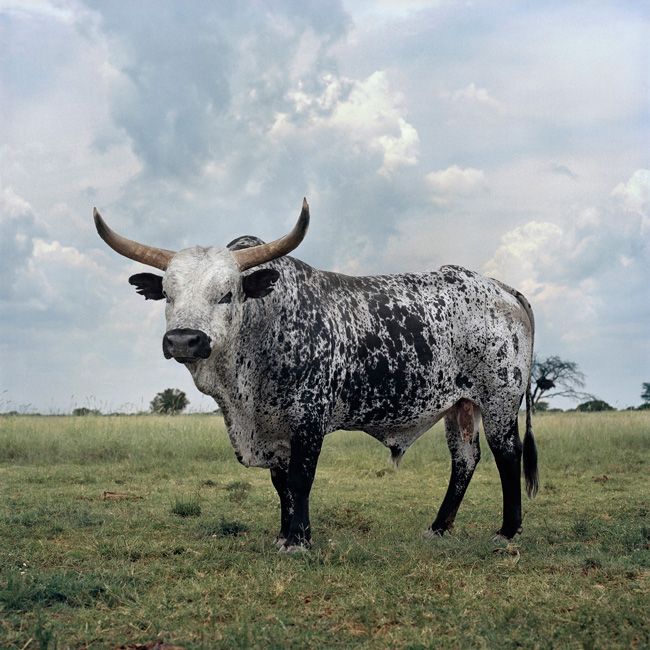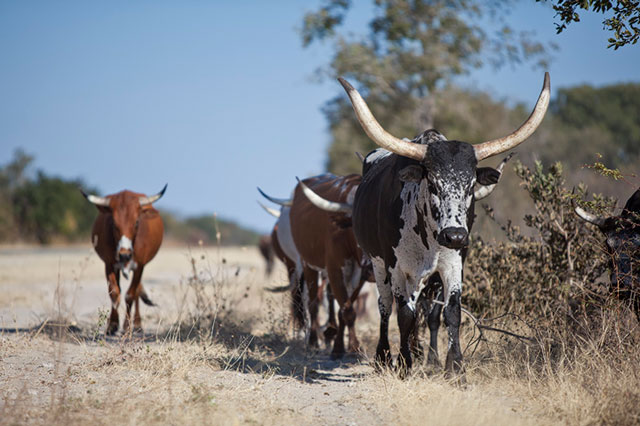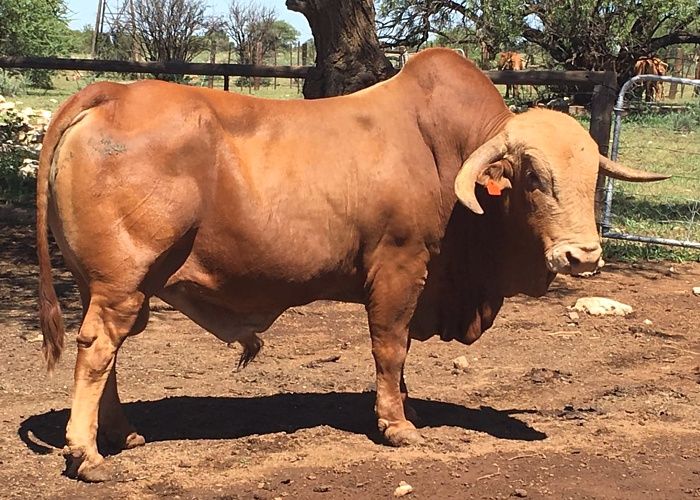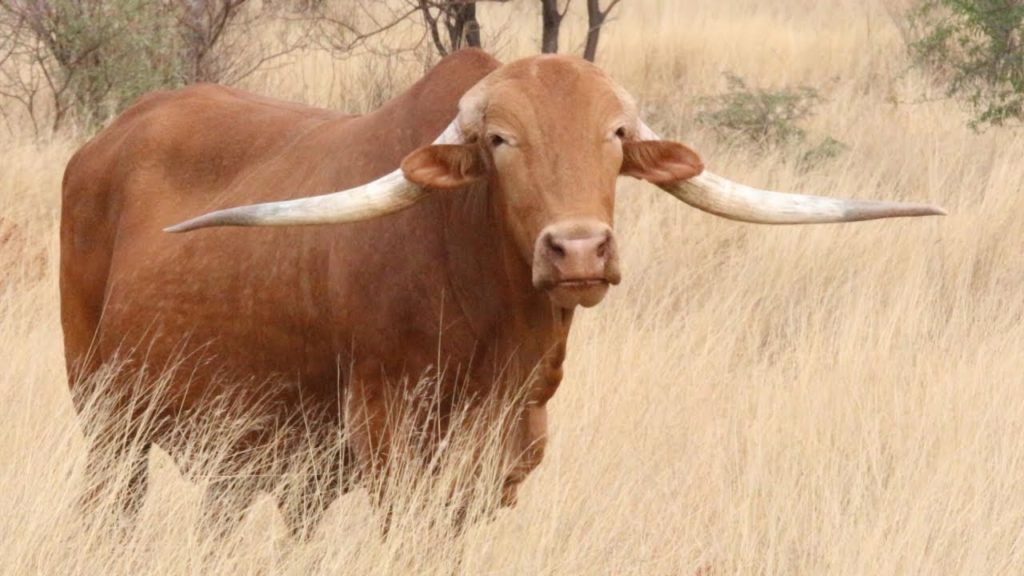there are a small number of cattle breeds which have originated in South Africa and which continue to be popular agricultural cattle today. Granted, not many of these little creatures have ever set foot off African soil. Yet their value as farm animals can never be underestimated. If you are a cattle lover from another country, you will likely be interested to know that there are no fewer different cattle breeds which can trace their origins back to this tip of the African continent.
Nguni cattle

The Nguni cattle breed is special to Southern Africa. A hybrid of different Indian and later European cattle breeds, they were introduced by Bantu-speaking tribes (Nguni people) to Southern Africa during their migration from the North of the continent. The cattle breed is medium-sized and adapted to grazing on the highveld.
Nguni cattle are known for their fertility and resistance to diseases, being the favourite breed amongst the local Bantu-speaking people of southern Africa (South Africa, Swaziland, Namibia, Zimbabwe, Botswana, and Angola). They are characterised by their multicoloured skin, which can present many different patterns, but their noses are always black-tipped. They are a principal form of Sanga cattle, which originated as hybrids of Zebu and humpless cattle in East Africa. DNA analyses have shown that they are a combination of Zebu (Bos indicus) and Bos taurus, the European and some other breeds of local cattle bred from Zebu. They are characterized by low cervicothoracic humps, in front of the front legs, instead of the high thoracic humps of pure Zebu. Besides the various colour patterns, these animals present a variety of horn shapes. All different combinations were catalogued at the beginning of the century by a South African herdmaster. This work inspired the Nguni Cattle Register, a compilation of terms to describe in full a Nguni cow or bull. The cattle are medium-sized, with bulls weighing between 500 and 600 kg, while cows weigh between 300 and 400 kg.

The ancestors of Nguni cattle were brought by the Nguni (Zulu, Xhosa, Ndebele, Swazi people, etc.), during their postulated migration south of Africa. Since then, these animals have played an important social and economic role in the development of these societies and are used as a bride’s lobola. The number of animals held by a village or individual determined much of their importance to the rest of the world. King Shaka of the Zulus understood this cultural and economic importance and seized control of the Nguni herds on his dominions. Shaka also bred the Ngunis according to colour patterns to produce hides for the several regiments of his army, henceforward recognized by them. His elite personal guard was recognised by pure white, from animals of the royal herd, the inyonikayiphumuli.
Nguni cattle may have many different colours and patterns, such as white, brown, golden yellow, black, dappled, or spotty.
Afrikaner cattle
The Afrikaner, also known as the Africander, is a breed of taurine-indicine (“Sanga”) cattle indigenous to South Africa.
Huge herds of Sanga type cattle were herded by the Khoikhoi (Hottentots) when the Dutch established the Cape Colony in 1652.

History
It is believed that the ancestors of Afrikaner cattle originated on the Asian steppes, before migrating into Africa about 2000 years ago. Cattle moved gradually southwards through the continent. Afrikaners share coancestry with the Nguni and Drakensberger breeds. They most likely diverged 655–960 years ago. Anecdotal evidence from Portuguese sailors suggests that herds of Afrikaner-like cattle had been kept by the Khoikhoi since at least the 15th Century.
The breed almost became extinct in the early 20th century during the Second Boer War, their numbers depleted through destruction and due to an outbreak of Rinderpest that halved the country’s total cattle population. After the war, programs were put in place to improve the breed.
In 1912, the first Afrikaner studbook was formed in South Africa in order to control the breed’s development. However, due to the recently depleted numbers of Afrikaner cattle, a high degree of inbreeding occurred at this time.
In 1923, it was proposed that Afrikaners be sent to the United States, and in 1932 the US government imported a herd to introduce new blood to the Gulf Coast. In 1929, a bull and two cows (one a calf) were gifted to King George V by the Africander Cattle Breeders’ Society of South Africa. The first five Afrikaners arrived in Australia in 1953 and were taken to the CSIRO’s Belmont station for research into their adaptability to the Australian climate. They were imported from Texas and Florida.
During the first half of the 20th century, Afrikaners were being bred to reduce the size of their hump, as this was unsightly to farmers used to the taurine cattle shape.
The Afrikaner was the most abundant cattle breed in South Africa until the 1970s, however, problems associated with inbreeding lowered fertility and decreased reproductive period in cows decreased their popularity among local farmers. Crossbreeding with exotic cattle breeds may have also contributed to the decline in population numbers, as well as the introduction of the Brahman to southern Africa.

Breed Characteristics
Afrikaners are usually deep red. They have the small cervices-thoracic hump typical of Sanga cattle.
The Afrikaner is a well-muscled breed, with long legs and a shallow body. They have long, lateral horns that turn upwards, although these are often polled in commercial operations. Bulls weigh 820–1,090 kg and cows weigh 450–600 kg. The legs are slightly sickle-shaped. They have good resistance to tick-borne diseases. They are well adapted to the local hot, arid conditions, as the sweat glands in their skin are more active than those of taurine cattle. This makes them more tolerant of heat than European breeds. They are more economical to keep, and a greater number of Afrikaners can be kept on the same plot of land as European cattle. They have a good temperament and are easy to handle.
Afrikaners have good fertility and can continue to calve over the age of 16 years, with records showing cows calving at 21. The cows are very maternal, and one female will often care for a number of calves while their mothers graze elsewhere. They have few calving problems, due to the structure of their hindquarters and small calf sizes (30–35 kg). They have a low calf mortality rate.
There is a medium to a high degree of genetic variation within this breed with a low inbreeding coefficient, despite the historic decline in numbers.
Uses
The Khoikhoi used the Afrikaners for meat and milk. Afrikaners were used primarily as draught animals after European settlement, often driven in large teams with as many as 14 animals. They were bred and developed to better suit this purpose and were prized by the voortrekkers. They were also used as dairy cows, though less commonly, producing higher butterfat contents than other cattle breeds, without the need for supplementary feed. It was Afrikaner oxen which drew the wagons that carried the Voortrekkers on the Great Trek.